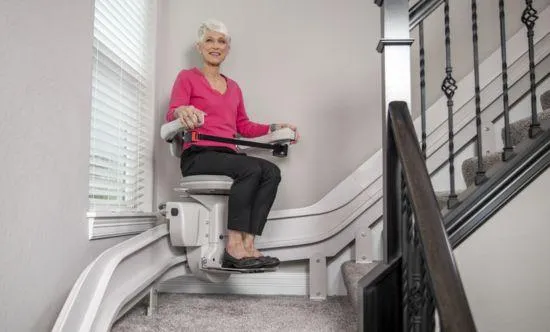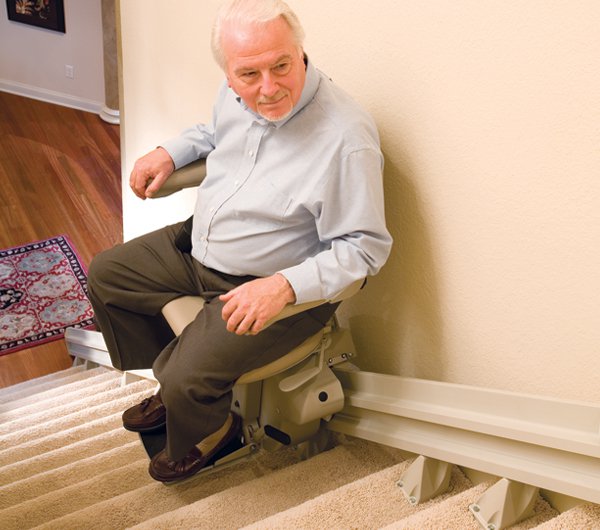
The Growing Demand for Stair Lift Purchases: What’s Driving It?
Widespread aging, desire to stay at home, and innovation in accessibility tools are driving a sharp rise in stair lift adoption. U.S. market size for stair lifts reached $925 million in 2024 and is projected to grow to $1.46 billion by 2032. Homeowners of multi-level residences increasingly prefer stair lifts over relocating, creating sustained demand. Improved safety features and supportive policies are making stair lift installations both practical and appealing.
Greater awareness of stair-related fall risks has prompted more families to consider stair lifts before emergencies occur. Stair lifts eliminate the need to climb stairs, offering smooth, seated vertical mobility. Paired with grab bars and proper lighting, they significantly enhance home safety and preserve independence for seniors.
Aging Population and Increasing Mobility Needs Create Stair Lift Demand
A rapidly growing senior demographic translates into higher stair lift usage in homes. With nearly 63 million Americans aged 65 or older in 2025, expected to reach 72 million by 2030, accessibility needs are escalating. Age-related conditions like arthritis and muscle weakness often make stairs challenging. Stair lifts support safe navigation without limiting access to upper floors.
Many seniors express a strong desire to age in place, making stair lift purchases a practical solution. Over 80% of adults aged 55+ prefer to remain in their homes as they age. Staying in familiar environments benefits emotional and physical well-being. Stair lifts empower individuals to retain independence and dignity in their living space.

Government assistance programs are expanding access to stair lift purchases for eligible individuals. Medicaid waivers and programs in several states help cover the costs of home modifications. Veterans may qualify for grants targeting mobility enhancements like stair lifts. Financial support removes barriers and enables safer living environments for many families.
Innovations in design and functionality increase the acceptance of stair lift solutions. Removable rails, space-saving foldable seats, and decorative upholstery allow seamless integration into home décor. Smart features like Wi‑Fi, obstacle detection, and voice activation contribute to ease of use and appeal. Easier installation encourages more homeowners to invest early in mobility upgrades.
Fall Prevention and Home Safety
Stair-related injuries account for over 1 million annual hospital visits, and stair lifts offer a direct solution. Operating seated removes the need to ascend or descend stairs, dramatically reducing fall risk. Built-in safety features like seat belts, swivel seats, and obstacle detection systems add a vital layer of protection. Families can maintain day‑to‑day routines across floors with no added risk after installation.
Emergency preparedness improves with battery-backed stair lift models, which continue to operate during power outages. Nighttime stair use carries a higher fall risk when visibility and alertness are reduced. Stair lifts maintain accessibility around the clock to ensure consistent safety. Caregivers and users gain confidence knowing travel within the home remains reliable.
Well‑placed grab bars and sensor-activated lighting enhance stair lift safety. Combining these options provides stable handholds and eliminates dark areas. Comprehensive home modifications reduce accidents throughout living spaces. A multi-layered approach to safety supports better health outcomes.
Customization and Technological Advancements
Modern stair lift designs now include features that increase comfort and fit into home aesthetics. Straight stair lift rails cost between $3,000–$5,500; curved models run from $7,500–$20,000. Options like remote controls, decorative upholstery, and space-saving rail designs make stair lifts less obtrusive. A wider range of choices encourages broader satisfaction among homeowners.
Refurbished stair lift options provide affordability and flexibility. Pre-owned units can cost 30–50% less than new models while still meeting safety standards. Budget-friendly pathways encourage more families to install these vital aids with seamless integration.
Higher-end models offer features such as automatic swivel seats and retractable rails that ease alignment during boarding. Preset seating positions can be programmed and stored, catering to routine use. Usage tracking systems alert service teams before issues arise. These innovations enhance long-term reliability and tailor stair lift performance to individual preferences.
A diverse palette of finishes and modular rail systems allows stair lifts to complement interior decor. Compact fold-up seats and rails free up staircase space for others in the household. Discreet design helps stair lifts blend in with furnishings rather than appearing clinical. Attention to aesthetics improves acceptance and emotional comfort.
Growing Awareness and Financing Options For Stair Lift Devices
Rising awareness among families has turned stair lift considerations into proactive home safety decisions. Advocacy groups and community education efforts highlight stair lifts as key home accessibility solutions. Personal stories and peer recommendations reinforce their value and normalize early adoption. Greater awareness helps older adults lead safer, more independent lives.
Accessible funding and grants increasingly recognize stair lift installations as essential home modifications. State grants and Medicaid waivers now accept stair lifts in eligible replacements. Discharge plans for hospital patients often include recommendations for stair lifts to prevent readmission. Early investment in stair lifts now reflects modern preventive care strategies.
Refurbished and rental stair lift options provide affordability and flexibility. Pre-owned units can cost 30–50% less than new models while still meeting safety standards. Rent-to-purchase programs support recovery needs or temporary housing arrangements. Budget-friendly pathways encourage more families to install these vital aids.
Healthcare providers increasingly prescribe stair lift installations when mobility begins to decline. Preventive prescriptions now include stair lift options under home safety interventions. Insurance plans and subsidy programs sometimes offer partial reimbursements. Early inclusion of stair lifts reflects their role in proactive mobility care.
Choosing a Stair Lift for Your Home
Significant growth in stair lift installation reflects demographic change, safety awareness, innovation, and stronger funding support. Stair lifts now offer a blend of advanced features, stylish integration, and long-lasting safety benefits. Families can choose solutions that enable seniors to maintain full access and independence within their homes.
Schedule a free in-home evaluation to review stair lift options tailored to your staircase and living needs. Our specialists provide professional installation, customization, and ongoing support for peace of mind. Talk to us today to add lasting mobility and safety to your home.

